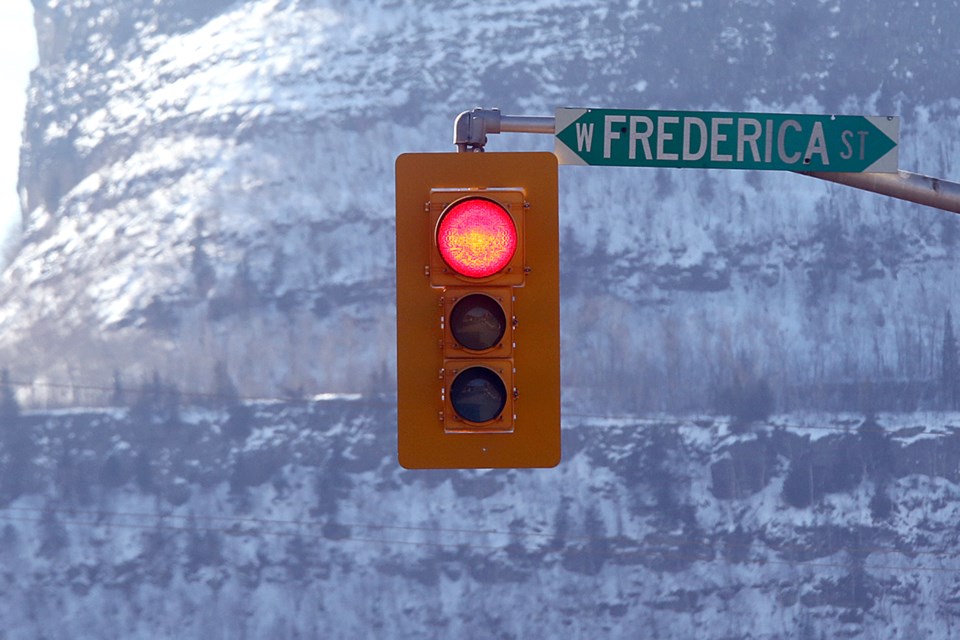THUNDER BAY – A multi-year, multi-million dollar plan to upgrade Thunder Bay’s traffic signal system will allow the city to synchronize lights on major corridors and prioritize transit and emergency vehicles.
The improvements would be made by 2025 under a motion proposed by Mayor Bill Mauro, which will be debated at city council on Monday.
The upgrades were already identified as a priority in the city’s transportation master plan in 2018, but Mauro’s motion would formalize a timeline and direct administration to budget for the project between 2022 and 2025.
The changes will not only trim travel times for residents, but also allow the city to prioritize public transit and emergency vehicles and reduce greenhouse gas (GHG) emissions, according to director of engineering and operations Kayla Dixon.
“You’ll see all of those types of benefits – traffic flow will improve, you’ll see better adherence to schedules for transit, and greenhouse gas emissions are reduced when you reduce the stop-and-start type traffic,” she said.
It’s a major overhaul of the current infrastructure, which Dixon described as a “legacy system.”
Only about one third of the city’s 112 traffic signals currently allow remote access, she said, while software is also significantly out of date
“I don’t know how many people still remember the sound of dial-up internet – that’s the sound we hear when we turn on our traffic control system,” Dixon said.
The transportation master plan put the cost of the system upgrade at roughly $4 million, but that estimate hasn’t been updated since 2018.
Mauro has argued improving traffic flow in the city would go a longer way to improve driver behaviour than punitive approaches like red light cameras, which city council rejected in June.
“It’s so frustrating for drivers, and you wonder why some people are starting to ignore red lights – it’s because we don’t have a functioning system,” agreed Coun. Mark Bentz at the time.
A revamped system that will allow synchronizing of lights along major corridors will go a long way towards addressing driver frustration – but it will have its limits, Dixon said.
“I think it’s important that people understand what syncing of traffic signals means. It doesn’t mean that when you specifically are travelling anywhere in the city, you’re going to get a green light – unfortunately, we can’t work magic.
“What it will do is synchronize certain corridors. So if you’re travelling on Arthur Street and you hit a green light, it will be timed so that likely you’ll hit the next green light, the next green light, the next green light – as long as you’re travelling the speed limit and there aren’t priority vehicles, [like] a fire truck.”
The change could bring fuel savings for motorists and for the city’s transit and corporate fleets, she expects.
“If we have transit on a pre-empt where they’re getting priority through intersections, they’re not seeing the stops and starts. Being able to adhere to schedules better, that should even increase ridership.”
The change will also improve troubleshooting, allowing remote access to signal controllers.
“We often count on residents to let us know if the detection [at] an intersection isn’t working – we’re not getting that type of information back from our controllers,” said Dixon. “With the new system, we’ll see the detection is in default, and we can get someone to go out and fix it more quickly.”
